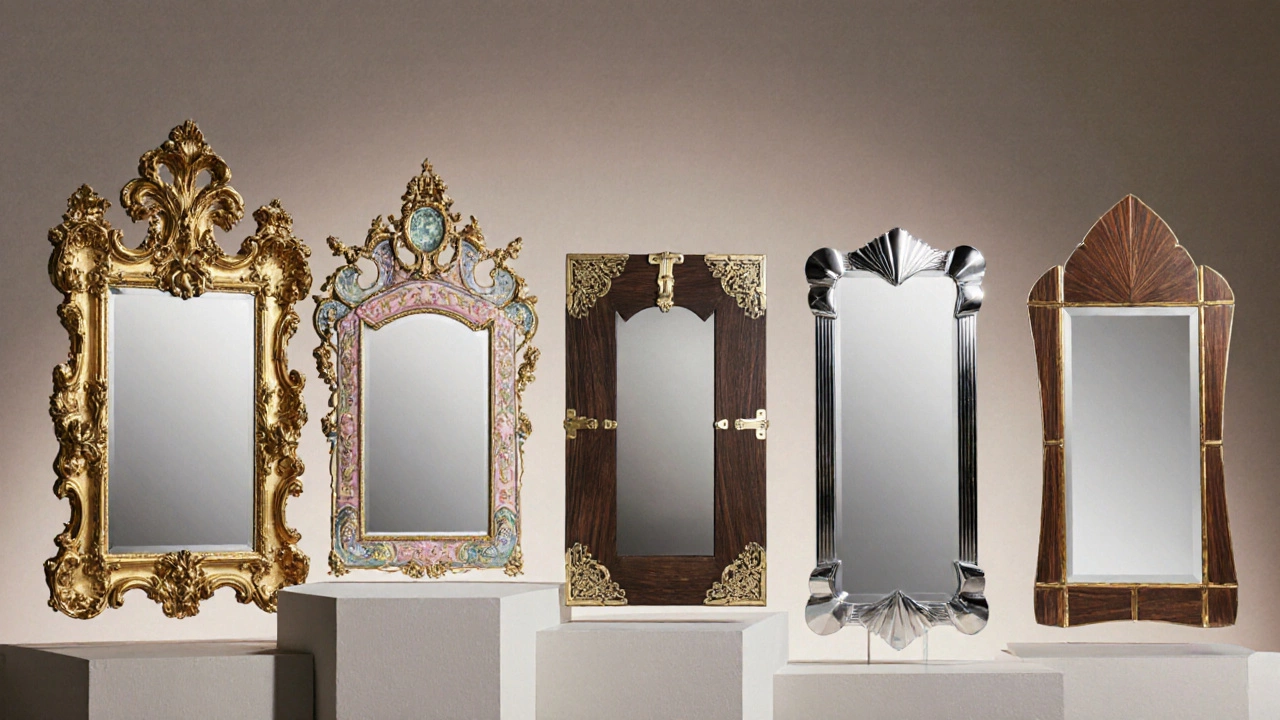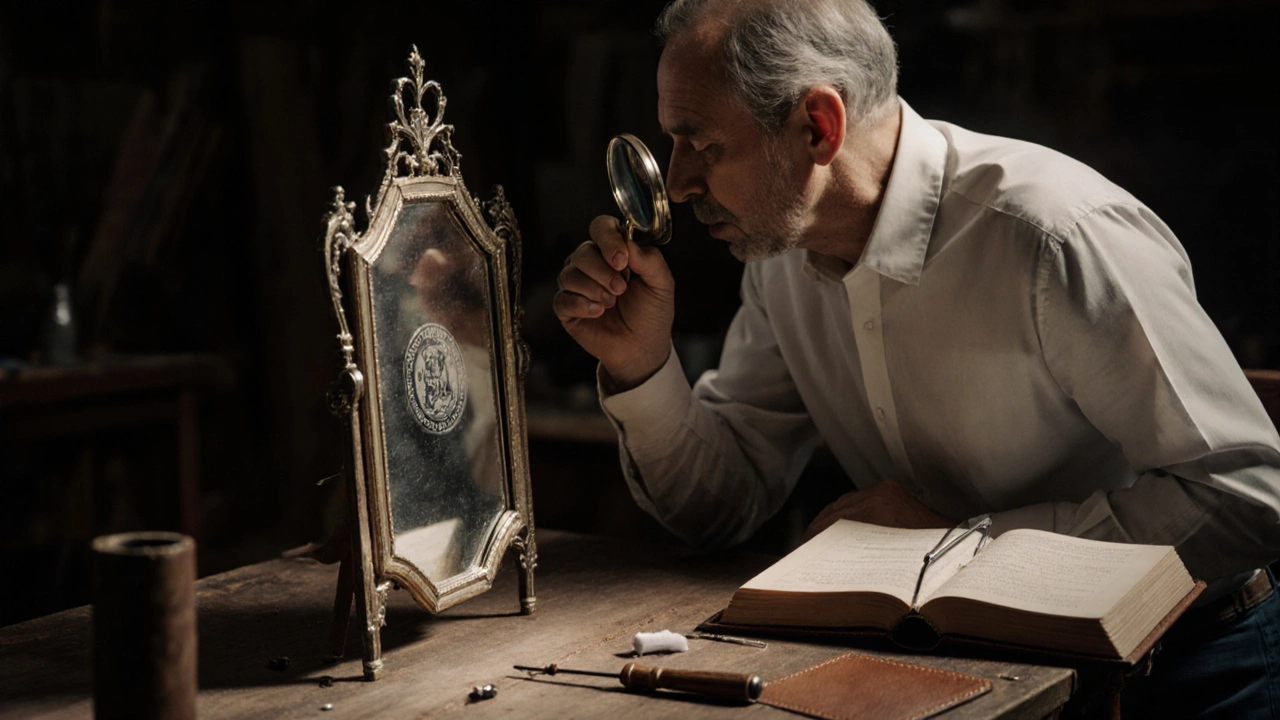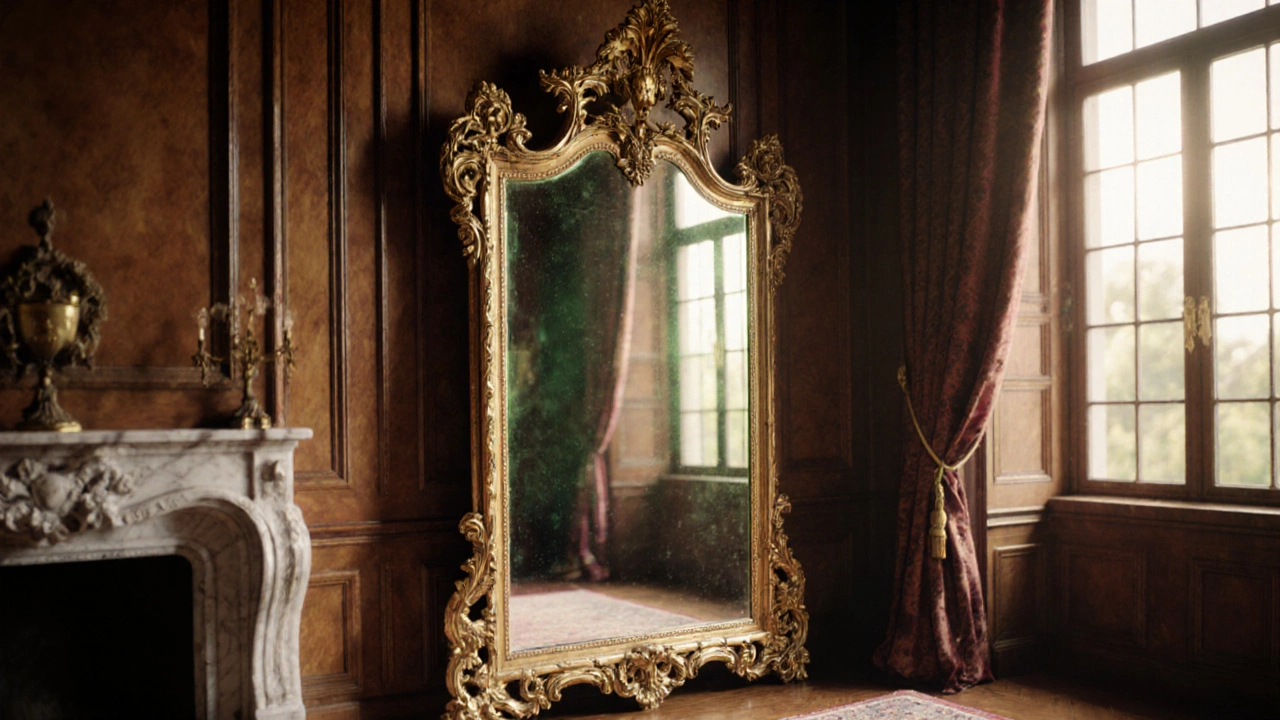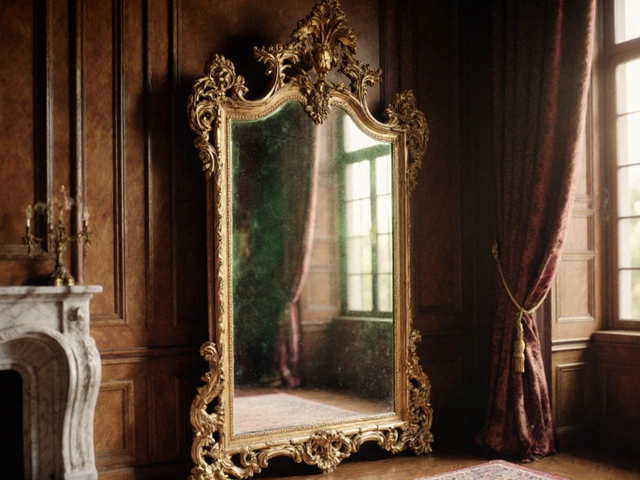Antique Mirror Age Calculator
Result
Enter the year of manufacture to see if your mirror qualifies as an antique
Style Period Reference
Key Takeaways
- In most markets, a mirror is called an antique when it is at least 100 years old.
- Legal definitions vary: the U.S. uses 100 years for customs, the U.K. often uses 75 years for sales tax relief.
- Style, construction technique, and maker’s marks can confirm age even when documentation is missing.
- Professional appraisal, provenance research, and material analysis are the safest ways to prove authenticity.
- A quick self‑check checklist helps you spot red flags before you contact an expert.
When you wonder "antique mirror age" the first thing to know is that there is no single global rule. Different countries, auction houses, and collector circles set their own cut‑offs. The good news? The most common benchmark across the board sits at a solid century. Anything older than 100 years usually earns the "antique" label, but the story gets richer when you dig into style periods, manufacturing methods, and legal definitions.
Antique mirror is a reflective surface that was produced at least one hundred years ago and retains its original frame, backing, or glass. Collectors and dealers also look for period‑specific design cues, authentic hardware, and provenance documentation to confirm the claim.
What "Antique" Means in the World of Mirrors
Antique is a legal and market term, not just a romantic description. In the United States, Customs & Border Protection classifies any object older than 100 years as an antique for import duties. The United Kingdom’s HM Revenue & Customs treats items over 75 years as "heritage" and offers reduced VAT for qualifying antiques. Auction houses such as Christie’s, Sotheby’s, and Bonhams typically set their own thresholds-most of them also start at the 100‑year mark.
Why the difference? Tax rules, import tariffs, and collector preferences each shape the definition. For most shoppers, the 100‑year rule is a safe shortcut, but if you’re planning to sell or insure the mirror, you’ll need to know the exact standard that applies in your jurisdiction.
Historical Periods That Signal Age
Even if you can’t read a date stamp, the style tells a story. Below are the most common eras you’ll encounter, along with the typical years they cover.
| Style | Typical Years | Key Features |
|---|---|---|
| Baroque | 1600‑1750 | Ornate gold leaf, deeply carved frames, dramatic curves |
| Rococo | 1730‑1780 | Asymmetrical scrollwork, pastel colors, playful motifs |
| Victorian | 1837‑1901 | Heavy wood, brass hinges, beveled glass, ornamental tassels |
| Art Deco | 1920‑1940 | Geometric lines, chrome or nickel, frosted glass, bold contrasts |
| Mid‑Century Modern | 1945‑1965 | Clean wood veneers, minimal hardware, sleek aluminum frames |
Notice the overlap? A mirror labeled "Victorian" could be 120 years old today, while an Art Deco piece might be just under the 100‑year benchmark. That’s why style alone isn’t enough-you need to combine it with material analysis and provenance.

Material Clues: How Construction Reveals Age
Mirrors have evolved dramatically since the 16th century. Here are three technical markers that help you pinpoint a mirror’s era.
- Silvering technique: Early mirrors used a thin layer of amalgam (mercury and tin) poured onto polished glass. By the 1860s, the chemical silver‑nitrate method became standard, producing clearer reflections. Look for a faint greenish tint on the back-that’s a sign of an older mercury‑based silvering.
- Glass type: Crown glass (rolled and then ground) was common until the late 1800s. Plate glass, which is uniformly flat, appeared after 1900. You can often tell by examining the edge-crown glass shows subtle waves.
- Backing material: Some 19th‑century mirrors have wooden backing painted to match the frame, while modern mirrors use dark polymer or painted metal.
When you combine these material clues with style cues, you get a reliable age estimate even without a dated label.
How to Verify an Antique Mirror’s Age
There’s no shortcut to a professional opinion, but you can do a lot on your own.
- Check for maker’s marks: Look on the back of the glass, inside the frame, or on hardware. Brands like Moser (Austria) and Burr & Son (UK) left distinct stamps that include a year.
- Research provenance: Family records, estate inventories, or old photographs can provide a timeline. Even a hand‑written note saying "bought in 1923" adds credibility.
- Consult an antique dealer or appraiser: Look for members of the British Antique Dealers' Association (BADA) or the Antique Collectors' Club. They will often perform a visual inspection and may request a small, removable sample for glass analysis.
- Use a mirror dating kit: Some kits include a magnifying lens, a light source, and a reference chart for back‑coating colors. These are useful for DIY enthusiasts but less reliable than a lab test.
- Consider a laboratory analysis: Specialized labs can determine the composition of the silvering layer and glass, giving a precise age range. This option is common for high‑value pieces earmarked for auction.
Common Pitfalls and Red Flags
Even seasoned collectors get fooled. Keep an eye out for these traps.
- Reproductions with fake marks: Some modern makers add vintage‑looking stamps. Authentic marks usually have a raised impression and consistent font.
- Recent restorations: A fully polished back surface can hide original silvering. Ask the seller if the mirror was re‑silvered or if any backing material was replaced.
- Mixed‑era frames: A 19th‑century glass set in a 21st‑century frame still counts as an antique glass, but the overall piece may be marketed as a "vintage" rather than an "antique".
- Missing provenance: Without any documentation, even a genuinely old mirror can be difficult to certify. Expect a lower resale value.

Quick Self‑Check Checklist
- Is the mirror at least 100 years old based on style and material?
- Do you see any maker’s marks, stamps, or signatures?
- Can you trace ownership through family records or estate documents?
- Has the glass been re‑silvered or the frame replaced?
- Do you need a professional appraisal for insurance or resale?
If you answered "yes" to most of these, you likely have an antique mirror worth further investigation.
Steps to Get a Professional Appraisal
When the stakes are high-say you’re planning to sell at auction or insure the piece-follow these steps.
- Locate a qualified appraiser: Search for someone listed with the International Society of Appraisers (ISA) or a local BADA‑member.
- Prepare documentation: Gather photos from multiple angles, any provenance papers, and a list of visible marks.
- Agree on fees: Most appraisers charge a flat rate or a percentage of the final sale price. Clarify before they start.
- Allow for material testing: The appraiser might need a tiny sample of the backing to confirm silvering method; this is usually done on an inconspicuous spot.
- Receive a written report: The report should include age estimate, style classification, condition grading, and market value range.
Conclusion: Age Is Just One Piece of the Puzzle
Knowing the exact number of years a mirror has existed helps you label it correctly, but true antique status also depends on style, craftsmanship, and documentation. Use the guidelines above to form a solid first impression, then let an expert confirm the details. That way you’ll avoid costly mistakes and enjoy the story your antique mirror carries across generations.
What minimum age makes a mirror an antique in the United States?
U.S. Customs classifies any item older than 100 years as an antique for import‑duty purposes. Most American auction houses follow the same rule, though some dealers accept 75‑year pieces as “vintage.”
Can a mirror older than 100 years still be considered “not antique”?
Yes, if it has been heavily altered-re‑silvered, remounted, or repainted-its original historic value may be compromised. Collectors often rate such pieces as “restored” rather than true antiques.
How do I tell if a mirror’s silvering is original?
Original mercury‑based silvering often shows a slight greenish hue when you look at the back of the glass. Modern silver nitrate coatings appear clear and reflective. A professional lab can confirm the composition.
Do maker’s marks guarantee an antique status?
Marks help pinpoint origin and age, but a fake stamp is possible. Verify the font, placement, and consistency with known examples. Cross‑checking with catalogues strengthens credibility.
Is an Art Deco mirror considered an antique today?
Art Deco dates from 1920‑1940. In 2025, the newest pieces are just over 85 years old, so they fall short of the 100‑year benchmark. However, many collectors label them “vintage” and value them highly for style.

